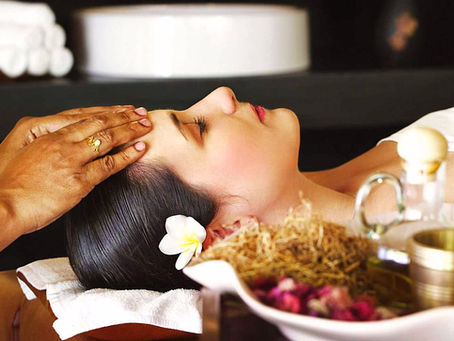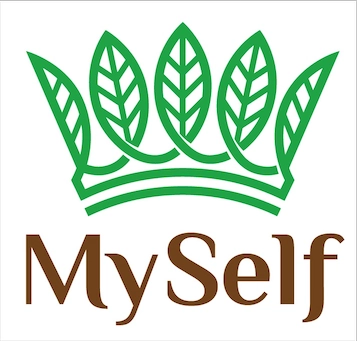Acne Rosacea: An Ayurvedic Perspective
At a conference on beauty and aging I attended recently it seemed to me that an unusually high percentage of the presenters were talking about Rosacea. Acne Rosacea, also called adult acne, is a condition of the skin in which large red papules or pustules form on the nose and cheeks area. These lesions may become large and painful, be accompanied by diffuse redness, broken or enlarged capillaries and general tenderness.
When I asked fellow presenters and conference participants if they had noticed so much attention being given to this condition, we were all in agreement. As to why is was being given so much attention, peoples answer seem to fall into three basic categories:
- that it is a common problem amongst mature clients
- that as it causes considerable physical and emotional distress, it is both cogent and timely to look more holistically at this condition at a skin care conference. However, the answer that caught my attention was…
- that the exact cause is unknown so people are always keen to hear about new findings.
This last response took me back to when I was studying occupational therapy and the moment when it finally dawned on me why the lectures I was attending on medicine and surgery were interesting but made me feel crazy. They were all directed at describing “cures” but could not give me any convincing information on causes. Thus the “treatments” were not real cures in my mind. At best they were comforts. They were measures that helped symptoms but didn’t strike at the root cause of the problem. I was looking for something deeper. So began my interest in what now is broadly known as “complimentary medicine” and eventually led me to Ayurveda.
Classically Ayurveda does not talk about a particular skin problem or disease. Instead these “problems” are viewed as symptoms of a particular energetic imbalance. In the case of Acne Rosacea it is considered to be a symptom of extra Pitta or fire-like energy that has been allowed to accumulate in the blood.
It is this fire-like energy that determines our body temperature, regulates our hormonal system and rules our digestion. When it is in balance it gives us focus, passion and an ability to vision the future. When it is allowed to build up in our body-mind system it presents us with symptoms that like fire flaring up, feel hot to the touch, look red or yellow and have a tendency to spread. Pitta symptoms often feel worse than they look and can be caused by or the cause for frustration and aggravation. If this Pitta energy accumulates in the red part of the blood it will eventually surface on the skin in the form of what we call Acne Rosecea. The severity of the condition depends on the amount of extra Pitta that has built up. Whether the condition becomes chronic depends on if this extra Pitta is encouraged to stay.
Some of us may be constitutionally more Pitta or fire-like to begin with, thus have greater tendencies for this energy to build up and persist. Pitta-type people typically are more athletically built, have fine, thinning, or prematurely graying hair, are fair, or freckled, and/or have sensitive skin that burns easily, with tendencies towards or a type “A” personality. These are all signs of there already being a lot of Pitta in the body. Others of us have adopted habits that “feed the fire,” elevating the Pitta in our constitutions to a disproportionate degree. So the solution must be two-fold. First, we must reduce the extra Pitta both topically and internally. Secondly, we need to develop habits that will keep Pitta in balance.
There are many excellent topical or external skincare procedures both from eastern and western traditions that are designed to cool and sooth the skin. Working internally means the promotion of regular bowel habits and possibly taking supplements that are known to purify the blood. This is the first part of the solution. The second part requires knowing what lifestyle choices aggravate the problem and what calms it. The trick here is to realize that for the problem not to become chronic the solution or “cure” has to be an ongoing process, where the client must to learn identify for themselves just what peaks their Pitta. This is made a little more complicated by the fact that imbalances in the blood take ten to fourteen days to manifest as symptoms from the time when the aggravation precipitating the symptoms happened. So if you are looking at the cause of a flare up you’ll have to remember what you were doing as long as two weeks ago to find the culprit. The factors that seem to cause problems that are listed in western literature include alcohol, smoking, sun exposure and spicy foods. Ayurveda agrees, then goes further. I’ve put these factors in a list so you or your clients can clearly see if their lifestyle choices are indeed contributing to the problem.
ENVIRONMENTAL FACTORS:
- High exposure to heat or sun past or present
- Working in front of computer screens, on mobile phones or around microwaves
- Exposure to chemicals – sprays, exhaust, out gases from new carpets and new building materials
- Synthetic perfumes
BEVERAGES:
- Alcohol especially spirits
- Hot spicy teas e.g. ginger
- Juices from tomato, cherry, cranberry, lemon, or strawberry
- Coffee and black tea
- Synthetically sweetened drinks FOODS:
- Red meats
- Seafood especially shellfish, shrimp, lobster, salmon and tuna
- Animals raised with hormones in their feed
- Egg yolks, especially from commercially-raised chicken eggs
- Chocolates, pastries
- Oily and fast foods
- Nuts
- Garlic and onions
- Spinach
- Peppers
- Tomatoes
- Sour fruits
- Olives
EMOTIONAL STATES:
- Frustration
- Anxiety
- Anger
- Over ambitiousness or “machismo”
- Excessive activity
- Felling under pressure
- Having difficulties in love relationships
DRUGS:
- Tobacco
- Antibiotics
- Psychoactive substances
BEAUTY TREATMENTS that are contra-indicated for high-Pitta people and conditions:
- Steams
- Hot compresses
- Abrasive therapies, i.e. microdermal abrasion, glycolic treatments
As mentioned earlier, these factors are much more likely be a problem for clients who are already constituitionally more Pitta to start with. However, the more our lifestyle exaggerates Pitta conditions in our daily experience, the greater the likelihood that Pitta symptoms such as Acne Rosacea will arise. So let’s now look on the bright side and see what will reduce and help to bring Pitta more into balance.
ENVIRONMENTALLY
- Wear a hat and sunscreen EVERY time you go out
- Whenever you get too hot, take time to cool down
- Don’t push yourself to a running sweat when exercising
- Get shields for your computer or buy one with a flat screen
- Get out into fresh air at least at weekends
- Seek out natural cosmetics, shampoos and perfumes
DRINK
- A small glass of room temperature water every waking hour
- A tablespoon of aloe vera gel morning and evening
- A half a cup of warm organic-quality milk with 1 teaspoon of ghee before bed
- Cooling and blood purifying teas e.g. mint, fennel, comfrey, chamomile, clover, lavender, burdock,
- Juices from apple, sweet orange, coconut, mango, pomegranate
- Beer or white wine socially, unless this is daily
EAT
- Less meat in general, and favor white meat, white fish, or wild meats when you do eat meat
- Tofu
- Yogurt
- White cheese
- Egg whites
- Steamed foods
- Plenty of green, fresh or cooked
- Cucumber
EMOTIONALLY
- Take stress relief seriously
- Try not to avoid competitive situations, unless they are necessary
- Learn breathing exercises, yoga, tai chi, or meditation
- RELAX - take time to “spa”
- Swim in cool, refreshing water
- Watch a funny or heart-warming movie
HERBAL HELPERS
- Blood purifiers e.g. aloe vera, turmeric
- Gentle laxatives, such as senna leaf tea
BEAUTY TREATMENTS
- Anything cooling or soothing
- Clay mask mixed with aloe and sandalwood
- Banana, cantaloupe, peach or pineapple mask
- Vegetable mask avocado, zucchini, mint and cilantro
- Cool comfrey compress
The recommendations made in this article will help you in suggesting lifestyle choices to your client to bring Pitta into balance. More detail of homemade cosmetic preparations are available in the books listed under resources.
After our teen years, it may seem odd, even embarrassing to think of having a condition so closely akin to days of our pubescence. But, we live in challenging times. Petrochemicals in our environment and food, the speed of communication, the competitiveness of the work environment, the anxiety of whether we are going to succeed or not, have our jobs tomorrow, and the threat of war all contribute to elevating Pitta – no matter who we are. Although we may not wish to look at it this way, Acne Rosacea and other high-Pitta conditions are gifts of knowledge, letting us know how we are being affected, beckoning us to seek ways that promote balance, harmony, and peace – personally and collectively.
RESOURSES Ayurvedic Beauty Care – Melanie Sachs Absolute Beauty – Pratima Raichur Effortless Beauty – Helen Thomas Milady’s Skin care Reference – Mark Lees

